 W
WThe McMurdo Station is a United States Antarctic research station on the south tip of Ross Island, which is in the New Zealand–claimed Ross Dependency on the shore of McMurdo Sound in Antarctica. It is operated by the United States through the United States Antarctic Program, a branch of the National Science Foundation. The station is the largest community in Antarctica, capable of supporting up to 1,258 residents, and serves as one of three year-round United States Antarctic science facilities. All personnel and cargo going to or coming from Amundsen–Scott South Pole Station first pass through McMurdo. By road, McMurdo is 3 kilometres (1.9 mi) from New Zealand's smaller Scott Base.
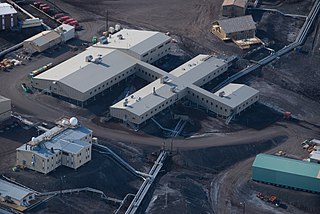 W
WThe Albert P. Crary Science and Engineering Center (CSEC), located at McMurdo Station, was dedicated in November 1991 by the National Science Foundation (NSF). The laboratory is named in honor of geophysicist and glaciologist Albert P. Crary. There are five pods making for 4,320 square meters of working area that includes a two-story core, a biology pod, earth sciences and atmospheric sciences pods, and an aquarium. CSEC was built to replace older, outdated science buildings that were built as early as 1959.
 W
WANDRILL is a scientific drilling project in Antarctica gathering information about past periods of global warming and cooling.
 W
WAntarctica: A Year on Ice is the first feature film by New Zealand filmmaker Anthony B. Powell. This documentary is set in Antarctica, specifically in the Ross Island region, which is home to two research bases: United States' McMurdo Station and New Zealand's Scott Base.
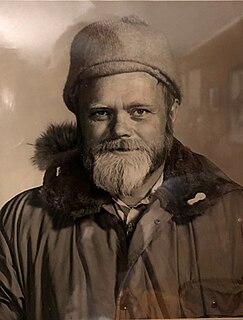 W
WLieutenant Commander James Florian Brandau, US Navy, retired, served multiple tours in Antarctica as a helicopter pilot as part of the U.S. Navy squadron VX-6. Several geological features in Antarctica are named in his honor, and he is featured in the literature and lore from there.
 W
WThe Chapel of the Snows is a non-denominational Christian church located at the United States' McMurdo Station on Ross Island, Antarctica and is one of eight churches on Antarctica.
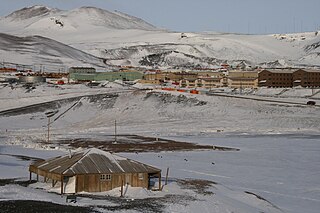 W
WDiscovery Hut was built by Robert Falcon Scott during the Discovery Expedition of 1901–1904 in 1902 and is located at Hut Point on Ross Island by McMurdo Sound, Antarctica. Visitors to Antarctica, arriving at either the US Base at McMurdo or New Zealand's Scott Base are likely to encounter Discovery Hut as both are located on Hut Point. Discovery Hut is just 300m from McMurdo Base. The hut has been designated a Historic Site or Monument, following a proposal by New Zealand and the United Kingdom to the Antarctic Treaty Consultative Meeting.
 W
WEncounters at the End of the World is a 2007 American documentary film by Werner Herzog. The film studies people and places in Antarctica. It was released in North America on June 11, 2008, and distributed by THINKFilm.
 W
WThe first women to fly to Antarctica were the American flight attendants Patricia (Pat) Hepinstall of Holyoke, Colorado and Ruth Kelley of Houston, Texas who were members of the crew on the Pan American flight which landed at the US McMurdo Station on October 15, 1957.
 W
WIcestock is an all-day, outdoor music festival held annually at McMurdo Station, Antarctica on or around New Year's Day. It was started in 1989 by three United States Antarctic Program employees who wanted to host a music festival in the style of Woodstock. It is the southern-most music festival in the world.
 W
WThe Ice Runway is the principal runway for the US Antarctic Program during the summer Antarctic field season due to its proximity to McMurdo Station. The other two runways in the area are the snow runway at Williams Field (NZWD) and the compacted snow runway at Phoenix Airfield (NZFX), which replaced Pegasus Field (NZPG) in 2017.
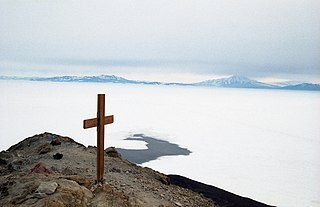 W
WObservation Hill is a steep 754-foot (230 m) hill adjacent to McMurdo Station in Antarctica and commonly called "Ob Hill." It is frequently climbed to get good viewing points across the continent. Regular clear skies give excellent visibility.
 W
WPegasus Field was an airstrip in Antarctica, the southernmost of three airfields serving McMurdo Station. It closed due to excessive melting in the summer season caused by warmer temperatures combined with dust and dirt blown in from nearby Black Island. The last flight was on December 8, 2016 and it was replaced by Phoenix Airfield with flights expected to start in February 2017.
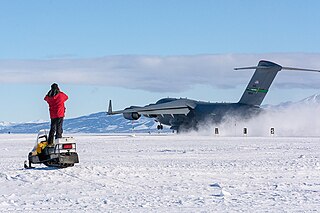 W
WPhoenix Airfield is an airstrip in Antarctica opened in early 2017, designed to replace the Pegasus Field's role in serving McMurdo Station.
 W
WThe South Pole Traverse, also called the South Pole Overland Traverse, is an approximately 995-mile-long (1,601 km) flagged route over compacted snow and ice in Antarctica that links McMurdo Station on the coast to the Amundsen–Scott South Pole Station, both operated by the National Science Foundation of the United States. It was constructed by levelling snow and filling in crevasses; flags mark its route from McMurdo Station across the Ross Ice Shelf to the Leverett Glacier, where the route ascends to the polar plateau and on to the South Pole.
 W
WAir Development Squadron Six was a United States Navy Air Development Squadron based at McMurdo Station, Antarctica. Established at Naval Air Station Patuxent River, Maryland on 17 January 1955, the squadron's mission was to conduct operations in support of Operation Deep Freeze, the operational component of the United States Antarctic Program.
 W
WWhiteout is a 2009 crime thriller film based on the 1998 comic book of the same name by Greg Rucka and Steve Lieber. Directed by Dominic Sena, with uncredited reshoots by Stuart Baird and Len Wiseman, it stars Kate Beckinsale, Gabriel Macht, Columbus Short, Tom Skerritt, and Alex O'Loughlin. The film was distributed by Warner Bros. and released on September 11, 2009. It was produced under the banner of Dark Castle Entertainment by Joel Silver, Susan Downey and David Gambino.
 W
WWhiteout is a comic book limited series by writer Greg Rucka and artist Steve Lieber. It was originally released in four issues during 1998, by Oni Press and then collected into a trade paperback.
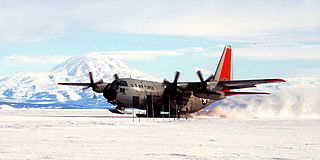 W
WWilliams Field or Willy Field is a United States Antarctic Program airfield in Antarctica. Williams Field consists of two snow runways located on approximately 8 meters (25 ft) of compacted snow, lying on top of 8–10 ft of ice, floating over 550 meters (1,800 ft) of water. The airport, which is approximately seven miles from Ross Island, serves McMurdo Station and New Zealand's Scott Base. Until the 2009–10 summer season, Williams was the major airfield for on-continent aircraft operations in Antarctica.